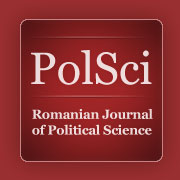This article addresses the issue of state capacity and suggests ways of conceptualising the term to make it more useful for the analysis of post-communist countries. While the state has recently been ‘brought back in’ to the debate about postcommunist transitions, it still suffers from considerable conceptual vagueness. However, in order to understand why some states are weaker than others, we first need to have a clear grasp of how to assess state capacity. This article deals with three key aspects: first, it touches upon the normative debate about the ‘ideal’ role of the state and points out how state capacity is related to, as well as conceptually and empirically differentiated from, this normative debate; second, it develops a model of the dual aspect of the state – the state as provider of solutions and the state as source of problems; third, it discusses several options for empirically assessing state capacity. This paper suggests that, rather than a ‘strong state’, the normative opposite of a ‘weak state’ might be better termed a ‘functional’ or ‘capable’ state – i.e., a state that enables society to respond continuously and dynamically to a changing international environment.
|
Focus
State Weakness in Post-Communist Countries: The Concept of State Capacityby Verena Fritz,
|
ABSTRACT FOCUS PAPERS |
Indexed in:
- Social Sciences Citation Index
(ISI Thomson Reuters) - IPSA
- GESIS
- CIAONET
- EBSCO
- CEEOL
- EPNET
International
Advisory Board
- Alina Mungiu-Pippidi (chair) Hertie School of Governance
- Larry Diamond Stanford University
- Tom Gallagher University of Bradford
- Alena Ledeneva University College London
- Michael McFaul Stanford University
- Dennis Deletant Georgetown University
- Helen Wallace London School of Economics and Political Science
Editorial Board
- Claudiu Tufiș
- Bogdan Iancu
- George Jiglau
- Ingi Iusmen
- Gabriel Bădescu
- Andrei Macsut
- Laura Voinea
Published by:

